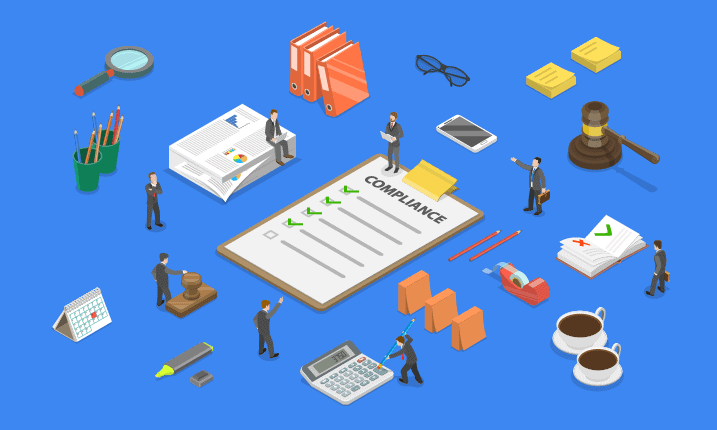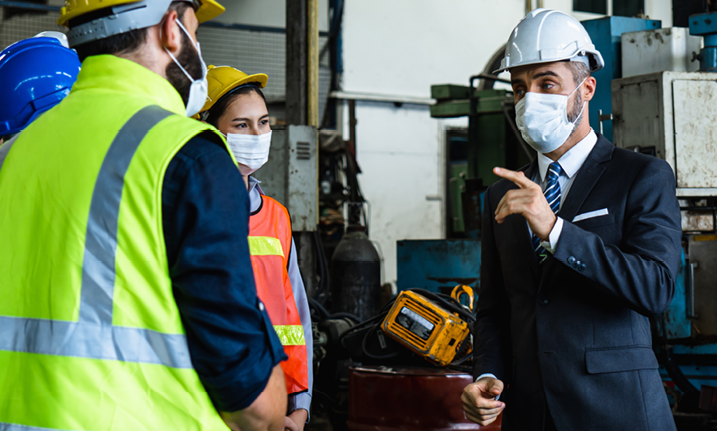

Are you a contracting company with a team of qualified workers? What can really set you apart from the crowd is your ability to demonstrate compliance with Australian safety laws, the National Employment Standards (NES), and industry-specific standards that govern the type of work you do.
Well-managed compliance is now as much a marketing tool as advertising and social media posts — and this blog takes a deep dive into the type of documents (and systems) that will bring your WHS compliance to the next level. It might even be said that compliance is almost equal to your technical ability to execute a contract.
1. Have a safety management plan
When you’re bidding for a job, one of the first questions you’ll be asked by a potential client is your approach to work health and safety. It’s expected you’ll have a WHS policy that outlines your commitment to safety in all aspects of your business — as well as a Safety Management Plan.
The Safety Management Plan describes the risks and hazards in the workplace, and how your work practices and procedures minimise (or eliminate) those hazards. It will usually include an Operational Safety Manual that unpacks and explains:
- Individual responsibilities for WHS issues.
- WHS risk management, hazard reporting, and record keeping.
- Consultation arrangements (including WHS committee and WHS Representatives).
- WHS training and induction.
- Incident notifications, reporting and investigation.
- Emergency response and first aid procedures.
- Personal Protective Equipment (PPE).
- Workplace auditing and hazard inspections
- Specific hazards related to the workplace (hazardous chemicals, confined spaces, manual handling, working at heights, vehicles, confined spaces, electrical safety).
Most client companies will request a copy of your Safety Manual plus information about your safety management system. Larger organisations will want to know if it complies with Australian Standard AS/NZS 4804:2001 Occupational health and safety management systems.
2. Get your compliance documentation ready
Client companies need a copy of your public liability and worker’s compensation insurances before allowing any of your workers onto their job sites. And depending on your industry and the type of work you do, you’ll also need to submit:
- Qualifications — trade qualifications (eg, Refrigerant Handling Licence), work permits (eg, WA High Risk Work Licence), licences (eg, Class HR Heavy Rigid Driver’s Licence).
- Identification — current government issued photo-ID.
- Vaccinations — some workplaces require visitors and contractors to have up-to-date vaccinations (eg, aged care facilities will request proof of influenza vaccination).
- Quarantine Clearances — your workers may need to prove they have undergone mandatory quarantine and have negative COVID-19 tests.
Client businesses need these documents for their own compliance purposes and having a quick-access system is a definite selling point. Workforce management software (based in the cloud) is a great option because it allows you to create individual files for each of your employees (or sub-contractors) — then once you’ve upload their documents you’ll have 24/7 access from any device.
3. Are your compliance procedures in place?
All client companies will expect your workers to be across the risks and hazards they face during their daily work. Can you quickly provide the following WHS compliance documents?
Safe Work Method Statements (SWMS)
Do you have SWMS (in the correct format for your state or territory) for all high-risk construction work? If you’re in the construction industry, your clients may request a copy of SWMS for any high-risk work being carrying out on their job site.
Job Safety Analysis (JSA)
Have you carried out JSAs on critical job tasks and developed standard operating procedures that address the potential hazards? Client companies may request copies of JSAs for specific tasks being carried out on their worksites.
Risk management
Can you demonstrate that you’re workers are prepared for the hazards they are likely to encounter on a client site? Some client companies will request your risk assessments and incident reports related to specific hazards, eg, you might need to submit a chemical management plan with evidence of SDSs and compliance with Australian Standards.
Rostering and work assignment
How do you assign a worker to a client site? If you manage a large workforce your clients will want to know how you differentiate between workers who are qualified for high-risk work and those who aren’t.
4. Make sure your training is up to date
You’ll need to prove that the workers you send to a client site are not only qualified, but have received enough training to do their job competently and safely. You may need to show evidence of:
- Qualifications — do you have records of all trade qualifications, as well as completed higher education?
- Licences and Permits (with expiry dates) — can you demonstrate how you ensure workers keep their licenses and permits up-to-date?
- On-the-job training — do you have records of safety forums, toolbox talks, and on-the-job training sessions?
- Inductions and refresher training — do you all your workers undergo inductions and regular refresher sessions?
- Site specific training — do your workers know how to interact on specific client sites, following procedures and site rules?
- Emergency drills — do you have records of fire and emergency response training as well as regular evacuation drills?
5. How an emergency response plan
Your workers need to know how to respond to emergency situations, either on a client site or on the way there. Do you have clear procedures that cover:
- Getting injured or being involved in a dangerous incident.
- Responding to an emergency situation involving a co-worker.
- Following an evacuation order at a client site.
- Delivering first aid treatment and using equipment such as safety showers or eye wash stations.
6. Incident management
What happens if one of your workers is injured on a client’s job site? Or encounters an unsafe work situation? Your clients want clear proof of your incident management system and may request to see you organisation’s:
- Incident management procedures.
- Incident report (and investigation) forms.
- Examples of actual incidents, investigations and corrective actions.
- Hazard register with subsequent control measures and monitoring.
- Evidence of hazard inspections and regular safety audits.
Recommended reading: Hold contractors to account while keeping the relationship intact.
Are you looking for an efficient way to manage your training, documentation, risk management, auditing and incident management — all in one place? Reach out to the Rapid team today and request a demonstration of Rapid Contractor Management, and ask about how our fully integrated software systems will help you instantly demonstrate compliance to clients, auditors, and government officials.







